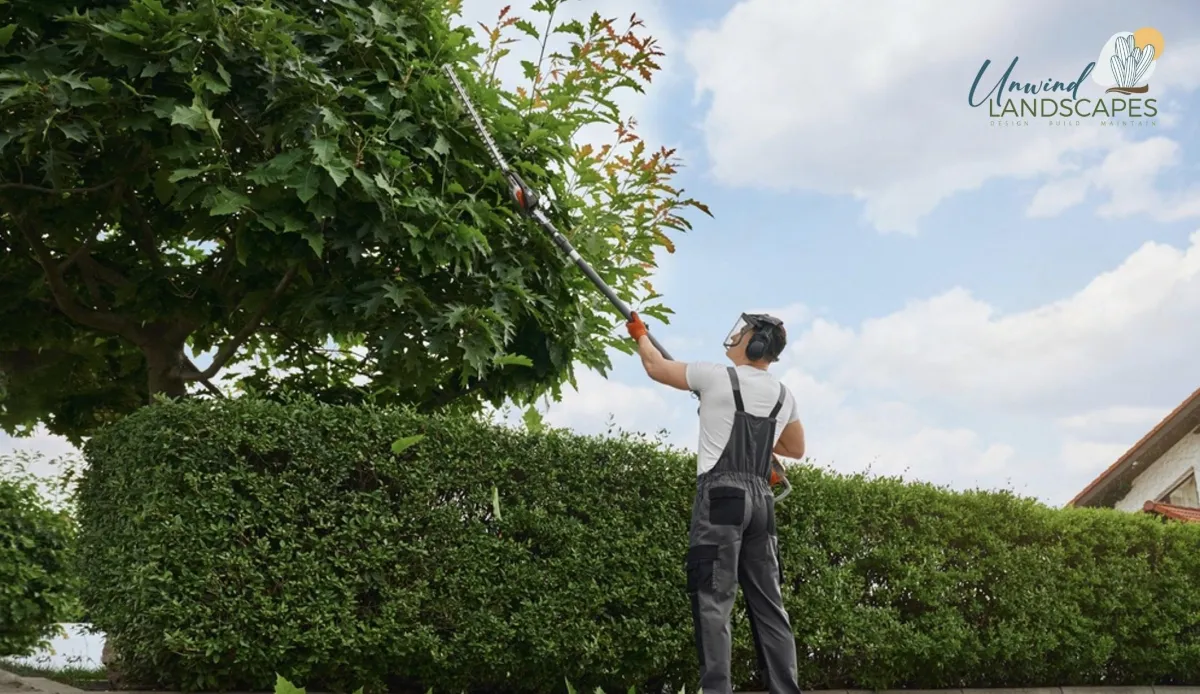
Tree Trimming in Phoenix: The Best Times of Year for Different Desert Trees
In the Sonoran Desert, trees do more than add beauty—they provide shade, reduce heat, and help our landscapes thrive in Arizona’s challenging climate. But keeping them healthy takes more than just water and sunlight. Proper trimming, timed to the tree’s natural growth cycle, is one of the most important ways to protect your desert trees and keep your yard looking its best.
At Unwind Landscapes, we believe in trimming with purpose and timing. Here’s when and how to care for some of Phoenix’s most common desert trees.
1. Palo Verde Trees (Spring Pruning for Strength)
The Palo Verde—Arizona’s state tree—is a fast grower with delicate green branches that can become brittle in storms.
Best time to trim: Late spring to early summer, after blooming.
This helps remove weak or dead limbs before monsoon season arrives, reducing the risk of storm damage. Avoid heavy pruning in winter when frost can injure exposed branches.
2. Mesquite Trees (Late Spring or Early Summer)
Mesquites are drought-tolerant and thrive in full sun, but their quick growth can make them top-heavy.
Best time to trim: May through early July.
By thinning the canopy just before monsoon season, you allow better airflow through branches, which helps prevent breakage from strong winds. Avoid pruning during cooler months—these trees respond best when they’re actively growing.
3. Desert Willow (After Flowering Season)
Desert Willows bloom beautifully through late spring and summer, attracting hummingbirds and adding color to Phoenix landscapes.
Best time to trim: Late summer or early fall, after blooming ends.
This keeps the tree’s natural shape and encourages strong growth for next year’s flowers. Avoid cutting during active blooming—doing so may reduce future flower production.
4. Olive Trees (Late Winter or Early Spring)
Many Phoenix homeowners love olive trees for their shade and Mediterranean flair.
Best time to trim: February to early March.
Pruning before the growing season begins helps shape the canopy, remove suckers, and minimize messy fruit drop later in the year. Be sure to hire a professional if you want to control blooming to reduce pollen and fruit.
5. Citrus Trees (Late Winter or Very Early Spring)
While not native to the desert, citrus trees are a staple in many Phoenix yards.
Best time to trim: February or early March, right before new growth begins.
Avoid pruning in summer when intense sunlight can scorch newly exposed branches. Always leave enough canopy to shade the trunk and protect the fruit.
6. Ironwood and Acacia Trees (Minimal Pruning Needed)
These hardy native trees are built for desert life and don’t require frequent trimming.
Best time to trim: Mid-spring to early summer, only when needed.
Focus on removing deadwood and crossing branches. Over-pruning can stress these slow-growing species, so less is definitely more.
Professional Care Matters
Desert trees are resilient but sensitive to improper cuts and timing. Over-trimming, cutting at the wrong time, or exposing bark during peak heat can cause irreversible damage. That’s why Unwind Landscapes offers expert trimming services tailored to each tree species and season.
Our team understands the rhythm of the desert—and we design, build, and maintain landscapes that thrive in Phoenix’s climate year-round.
Let Your Landscape Breathe Easy
Smart tree trimming keeps your outdoor space safe, beautiful, and sustainable through Arizona’s toughest seasons. Whether you need spring cleanup, storm prep, or annual maintenance, Unwind Landscapes is here to help you design, build, and maintain a desert landscape that truly lets you unwind.
🌿 Unwind Landscapes — Phoenix’s trusted experts in desert design, build, and maintenance.
At Unwind Landscapes, we're here to help every step of the way. As your professional Phoenix Landscapers, we take your vision from an initial Tree Trimming Phoenix to a completed project. Let's make your outdoor space unforgettable together with a Free Landscaping Design Estimate.
This content is for general reading purposes only and should not be considered legal advice or content.

